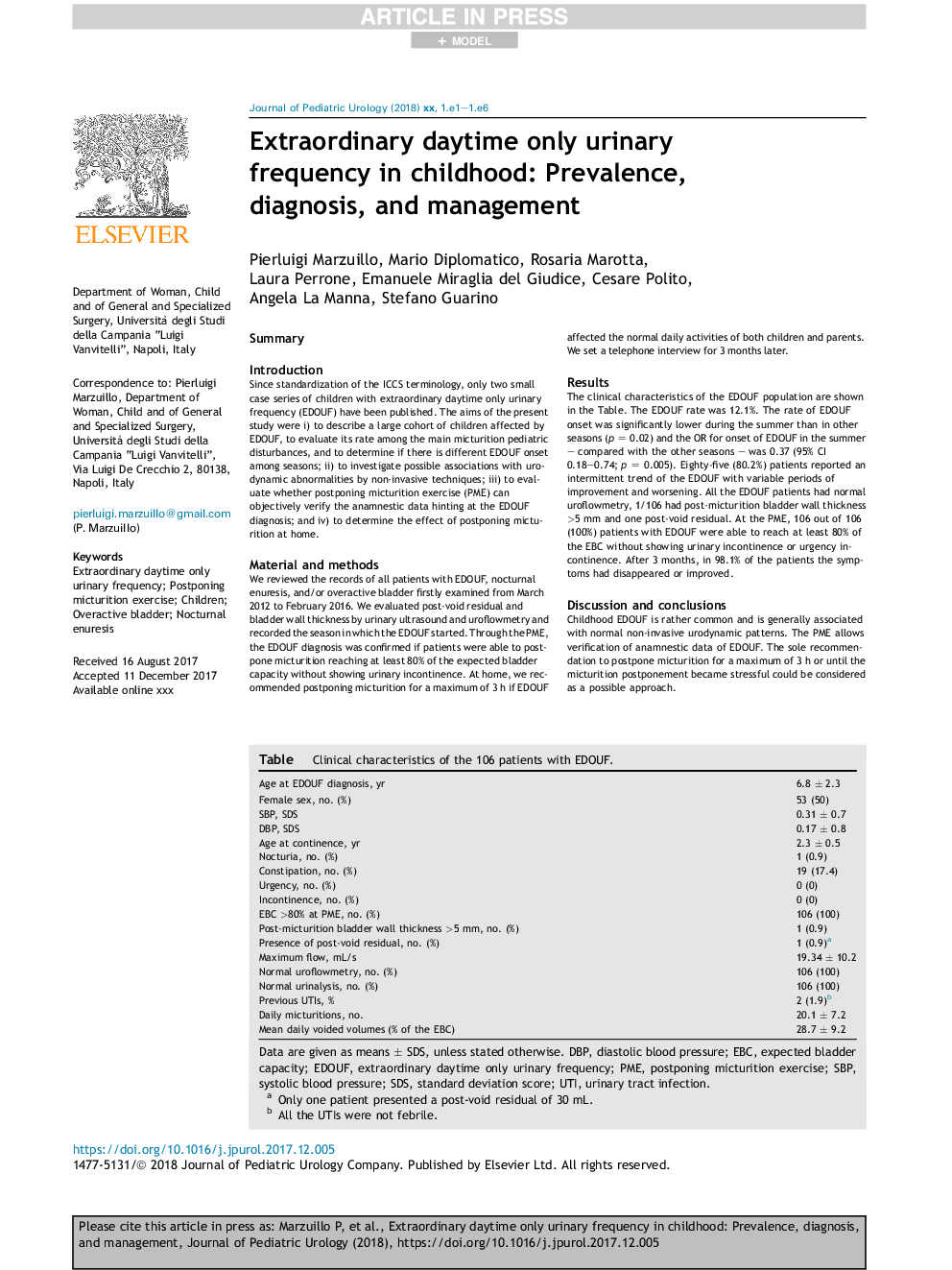| Article ID | Journal | Published Year | Pages | File Type |
|---|---|---|---|---|
| 8811642 | Journal of Pediatric Urology | 2018 | 6 Pages |
Abstract
Childhood EDOUF is rather common and is generally associated with normal non-invasive urodynamic patterns. The PME allows verification of anamnestic data of EDOUF. The sole recommendation to postpone micturition for a maximum of 3 h or until the micturition postponement became stressful could be considered as a possible approach.Table. Clinical characteristics of the 106 patients with EDOUF.Age at EDOUF diagnosis, yr6.8 ± 2.3Female sex, no. (%)53 (50)SBP, SDS0.31 ± 0.7DBP, SDS0.17 ± 0.8Age at continence, yr2.3 ± 0.5Nocturia, no. (%)1 (0.9)Constipation, no. (%)19 (17.4)Urgency, no. (%)0 (0)Incontinence, no. (%)0 (0)EBC >80% at PME, no. (%)106 (100)Post-micturition bladder wall thickness >5 mm, no. (%)1 (0.9)Presence of post-void residual, no. (%)1 (0.9)aMaximum flow, mL/s19.34 ± 10.2Normal uroflowmetry, no. (%)106 (100)Normal urinalysis, no. (%)106 (100)Previous UTIs, %2 (1.9)bDaily micturitions, no.20.1 ± 7.2Mean daily voided volumes (% of the EBC)28.7 ± 9.2Data are given as means ± SDS, unless stated otherwise. DBP, diastolic blood pressure; EBC, expected bladder capacity; EDOUF, extraordinary daytime only urinary frequency; PME, postponing micturition exercise; SBP, systolic blood pressure; SDS, standard deviation score; UTI, urinary tract infection.aOnly one patient presented a post-void residual of 30 mL.bAll the UTIs were not febrile.
Related Topics
Health Sciences
Medicine and Dentistry
Perinatology, Pediatrics and Child Health
Authors
Pierluigi Marzuillo, Mario Diplomatico, Rosaria Marotta, Laura Perrone, Emanuele Miraglia del Giudice, Cesare Polito, Angela La Manna, Stefano Guarino,
